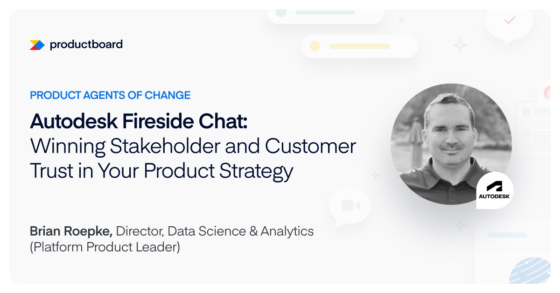A CPO on scaling product management by focusing only on what matters (and how to define what matters)

Claire Milligan, Co-Chief Product Officer of Certify Inc./Chrome River, recently joined us at the productboard San Francisco office for a Product Management Speaking Series. In an engaging presentation, she walked the audience through a four-component iterative process that she uses to scale the product management function at her company.
Certify Inc./Chrome River’s product management challenges
Claire started by sharing the product management challenges she faced at Certify Inc./Chrome River, a private equity-owned company with a portfolio of travel, expense, and invoice management brands.
When Claire joined the team, the product department did not have a clear structure or codified decision-making process. Despite successful growth, product conversations were fragmented across emails and other channels; initiatives were scattered and lacked clear ownership; what went on the product roadmap was guided by personal preference or the “necessary evil.”
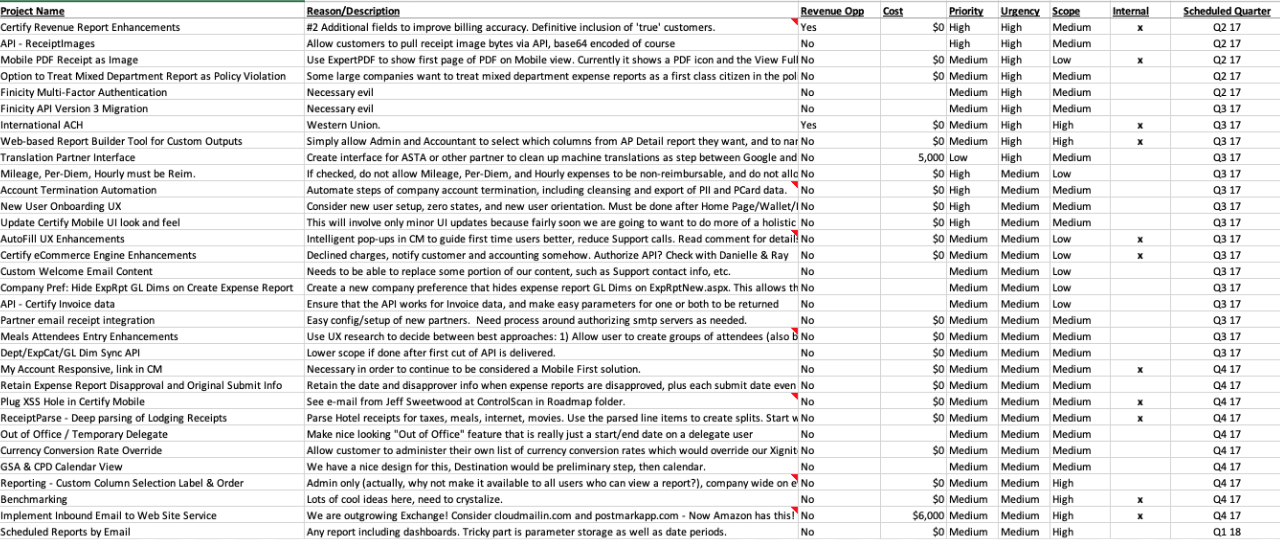
The four key initiatives
Instead of changing everything all at once, Claire decided to approach this challenge with an iterative approach. To do this, she focused on four key product management initiatives:
- Ideal customer profile
- Redefining roadmap
- Customer engagement loop
- Data in every decision
Ideal Customer Profile
There are two ways that organizations commonly approach product prioritization:
- Prioritize according to sales requests — A prospect says they will buy your software if you build a feature for them.
- Prioritize by unmet market needs — An industry has an existing need that is not currently serviced by any software.
According to Claire, neither of these approaches drive the right results.
Prioritizing according to sales requests increases your revenue in the short-run but may not align with your long-term product direction and the needs of the market you are already serving.
When you prioritize by unmet market needs, there is a chance that you tap into a successful opportunity. However, since it’s a new market, it is a challenge to evaluate its size. Additionally, your decisions may not resonate with your current customers.
Instead, Claire recommends prioritizing with an Ideal Customer Profile (ICP) in mind, a concept widely used in account-based marketing (ABM).
Account-based marketing is a marketing strategy that turns the marketing funnel around. With ABM, you start by identifying your target customer instead of filtering through a broad set of personas.
The return from buyers that fit your ICP vastly outweighs the acquisition costs. Thus, the ICP is extremely useful for product decision-making, especially when it comes to prioritizing features.
How do you define your Ideal Customer Profile? Claire points out a common set of characteristics to look out for:
- Highly engaged usage.
- No feature requests.
- Sells quickly.
- Satisfied with their customer support experiences.
- High revenue value.
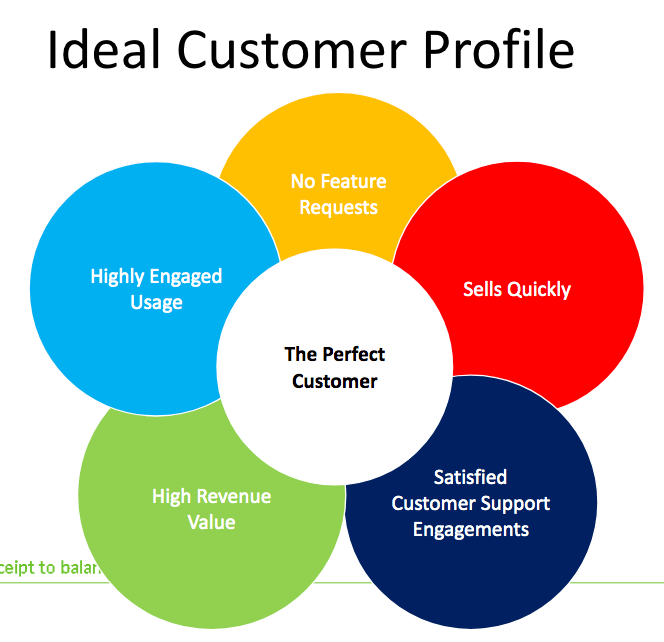
Knowing your Ideal Customer Profile opens up key opportunities that you can leverage as a product manager:
- Market penetration vs. opportunity sizing — if you know what industry you’re targeting with your ICP, you can estimate the entirety of the opportunity and understand how much of the market you’ve penetrated. This enables you to evaluate the revenue impact for specific product-related decisions and quantify opportunities presented by unmet market needs.
- Competitive differentiation — the ICP allows you to overlap with direct competitors as long as you optimize specific areas of your product that best meet the needs of your target customers.
- Feature value scoring — when evaluating the requirements of your customers, Claire suggests employing RICE, feature impact scoring via productboard, or another prioritization framework and then measuring it against your ICP. This makes the feature prioritization process much more structured and manageable.
Redefining roadmap
When building your product roadmap, Claire suggests that you divide it into two key components:
- Commitments — Features on a publicly available roadmap that you commit to deliver within a specific timeframe.
- Priorities — Additional features on the internal roadmap that can be removed or replaced if a higher priority feature is added.
When choosing your commitments, Claire stresses the importance of knowing and understanding your engineering resources (how many engineers you have, what their capacity is). It is incredibly important that you only commit to what you can build.
Priorities are all other product initiatives and activities that don’t classify as commitments. Claire believes that priorities should not be shared with users and other stakeholders so you have the flexibility to move around your roadmap and re-prioritize features as needed.
By using this framework, Claire’s product team was able to deliver 46 of 51 commitments and 25 out of 27 total priorities in one year. Most importantly, the flexibility of this method allowed the PM team to bring in 15 escalations that weren’t originally part of the roadmap.
Customer engagement loop
Many organizations rely on a customer feedback process that is inherently flawed. Customer support tickets and sales opportunities turn into stories in Jira for the engineering team to execute. Frequently, companies end up building features based on what the support or sales teams have said rather than real customer insights.
This process is problematic because it doesn’t provide information on how many people have requested a specific feature, why they need it, and what they need specifically.
To tackle this issue, Claire’s team decided to group customer requests into two categories:
- Immediate requirements — Requested by one customer, needs an urgent response. “I need a delivery date or we’re canceling/not buying.”
- Broadly applicable preference — Mentioned by a wide variety of customers. “When do you think you’ll build…”
To motivate customers to send valuable information on their needs and reduce the number of immediate requests, Claire’s team built a new process for collecting and executing requests:
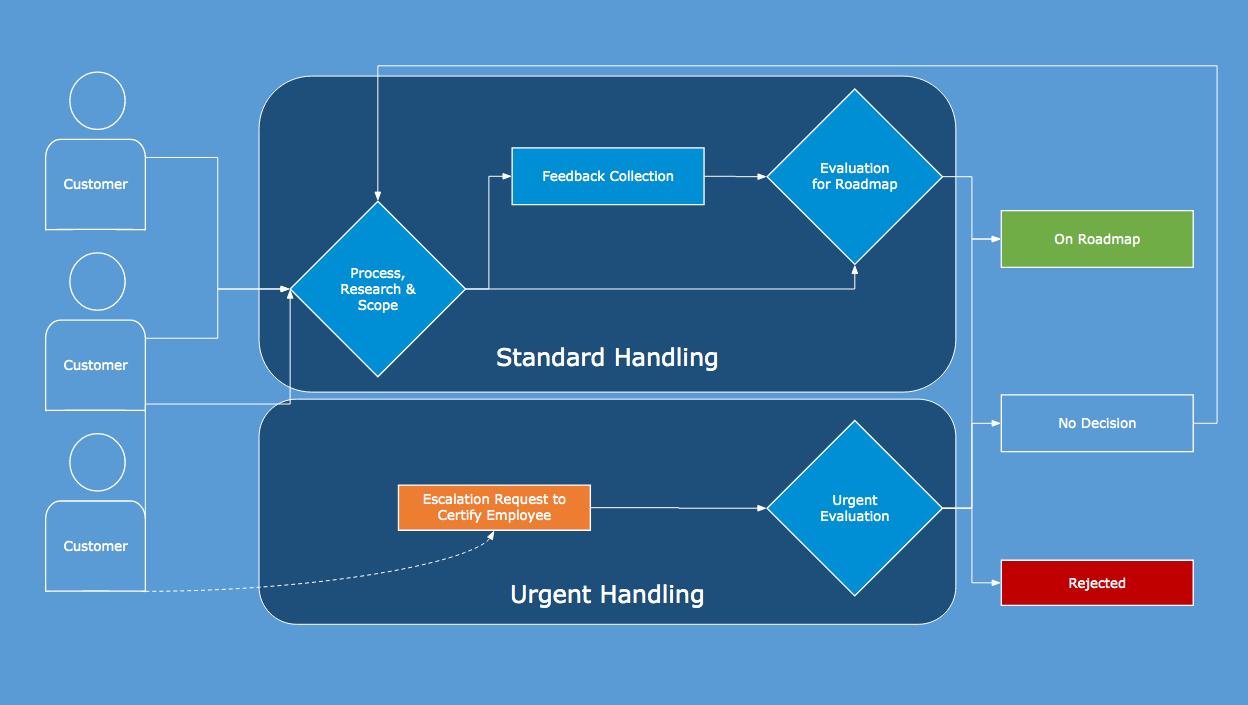
By being transparent about their request implementation process and educating the customers about the impact they make by sharing valuable feedback, Claire’s team was able to get customers to engage and collect critical insights for the roadmap.
Below is a screenshot of Certify’s public roadmap, organized in a public productboard Portal. With this public roadmap, Certify is able to collect a wealth of valuable customer data.
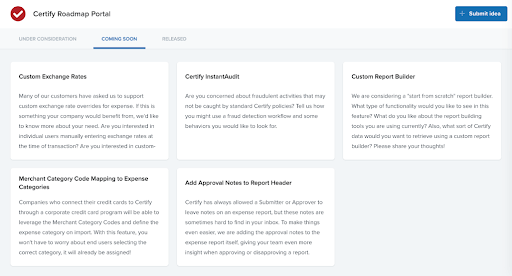
Data in every decision
According to Claire, there are three different levels of data in every product decision, and none of them are an exact science:
- Hazy — Would my ideal customer care about this feature? Should I even put this on the roadmap?
- Rough Indicator — Can I map a trend in my customer base? For Claire, productboard Portal votes and the insights board are incredibly helpful during this level.
- SWAG: Scientific Wild Ass Guess — How will building this feature impact our company growth?
By thinking through these three levels, Claire is able to back up most product decisions with data. She illustrates the importance of incorporating data in every decision with an example. In the public Certify Portal on productboard, one feature has 171 upvotes. The other, just one.

Without this indicator of what customers are looking for (and a general keen focus on data), the team could have easily built the wrong feature.
. . .
These days, the product management organization at Certify Inc./Chrome River is much more structured. Processes around gathering customer feedback, prioritization, and roadmapping are in one place (in productboard!) and no longer fragmented across different channels. Product decisions can be systematically backed up by data.
As a result, Claire has been able to scale her work across the multiple brands that she oversees and no longer relies on an incomprehensible spreadsheet to communicate what features get built next.
. . .
productboard is a product management system that enables teams to get the right products to market faster. Built on top of the Product Excellence framework, productboard serves as the dedicated system of record for product managers and aligns everyone on the right features to build next. Access a free trial of productboard today.


